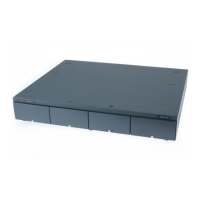4. Click the Standard tab and confirm that the settings match the calls you expect to be
routed to the auto attendant.
For more information, see the IP Office Manager on-line help.
5. Click the Destination tab.
6. In the Destination drop-down box, select the auto attendant.
The names of the configured auto attendants are shown prefixed with AA:.
In this example, the Fallback Extension has also been set to route calls to a hunt group.
The Fallback Extension setting is used for callers in the auto attendant who do not make a
valid key press within the auto attendant's Maximum Inactivity time.
Using time profiles, you can add additional destination sets to use the auto attendant at
certain times of day or to use different auto attendants at different times.
7. Click OK.
8. Select File > Save Configuration to save the changes back to the system.
Related links
Auto attendant configuration on page 44
Transferring calls to an auto attendant
Normally calls are directed to an auto attendant by an incoming call route. However, it can also be
useful to transfer calls received at an internal extension to an auto attendant.
Related links
Auto attendant configuration on page 44
Short codes on page 52
Programmed buttons
Avaya telephones with programmable buttons can be programmed to access auto attendant
services.
Auto attendant configuration
September 2020 Embedded Voicemail Installation 50
Comments on this document? infodev@avaya.com

